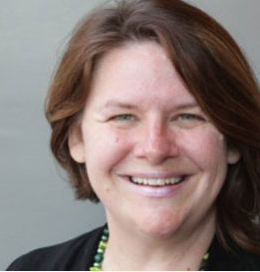
Virtual reality, augmented reality, and artificial intelligence are no longer in the realm of science fiction. The Distance Teaching & Learning Conference will devote several sessions to such immersive technology and its uses in higher education.

In “What’s the Buzz? Deciphering How VR/AR and AI May Impact Distance Learning,” Rose Cameron will discuss the strengths and weaknesses of these technologies for distance education.
In “Making It Real: Virtual Reality for Learning,” Gordon Bellamy will explore innovations that allow multiple users to enter the same virtual space and interact with one-another in real time, creating new opportunities for online and distance education.
And in “Emerging Directions in Immersive Learning,” Chris Dede will show how instructors can use virtual reality, multi-user virtual environments, and mixed reality across a range of subject areas and educational settings.
Immersive technology is flourishing in the consumer market, and Dede suggests that distance educators ignore it at their peril.
“Distance education is subject to disruptive innovation, in which consumers rapidly migrate to a new, better model,” says Dede, the Wirth Professor in Learning Technologies at Harvard University. “Immersive media disrupted the entertainment market some time ago, and the risk is that something similar could happen to educators who dismiss these media as irrelevant.”

The Distance Teaching & Learning Conference, hosted by the University of Wisconsin-Madison on July 25-27, offers a chance to get up to speed on these and other emerging technologies. The conference attracts college faculty and administrators, instructional designers, researchers, private-sector and government trainers, and vendors of new technologies and services. Participants can choose from more than 170 sessions, network with colleagues, and learn evidence-based strategies from experts in the field.
Plan, Act, Reflect
Dede says distance education too often uses the model of “teaching by telling” and “learning by listening.” As proof, he cites massive open online courses that are filled with readings and videos.

By contrast, immersive technology allows students to take an active part in the “Plan, Act, Reflect” cycle, which allows them to master complex knowledge and sophisticated skills. In this model, students prepare for an experience that involves doing something they want to learn (Plan), then dive in (Act), and finally assess the process (Reflect).
“Immersive learning provides powerful ways of supporting the Act part of the cycle in rich, authentic, simulated settings,” Dede says. “We see this in massively multiplayer online games. But this type of learning across distance is focused on fantasy rather than academic subjects.”
Dede is certain that immersive learning will become standard in distance education, but first there are economic and psychological barriers to overcome.
“The challenge,” he says, “is to develop some compelling proofs of concept, so that using immersive media becomes a competitive advantage in the distance and blended learning market.”
For more information about the Distance Teaching & Learning Conference, see here or contact director Les Howles, les.howles@wisc.edu, 608-265-9753; or conference manager Kimary Peterson, kimary.peterson@wisc.edu; 608-265-4159.